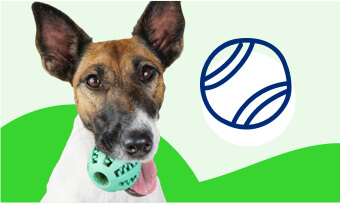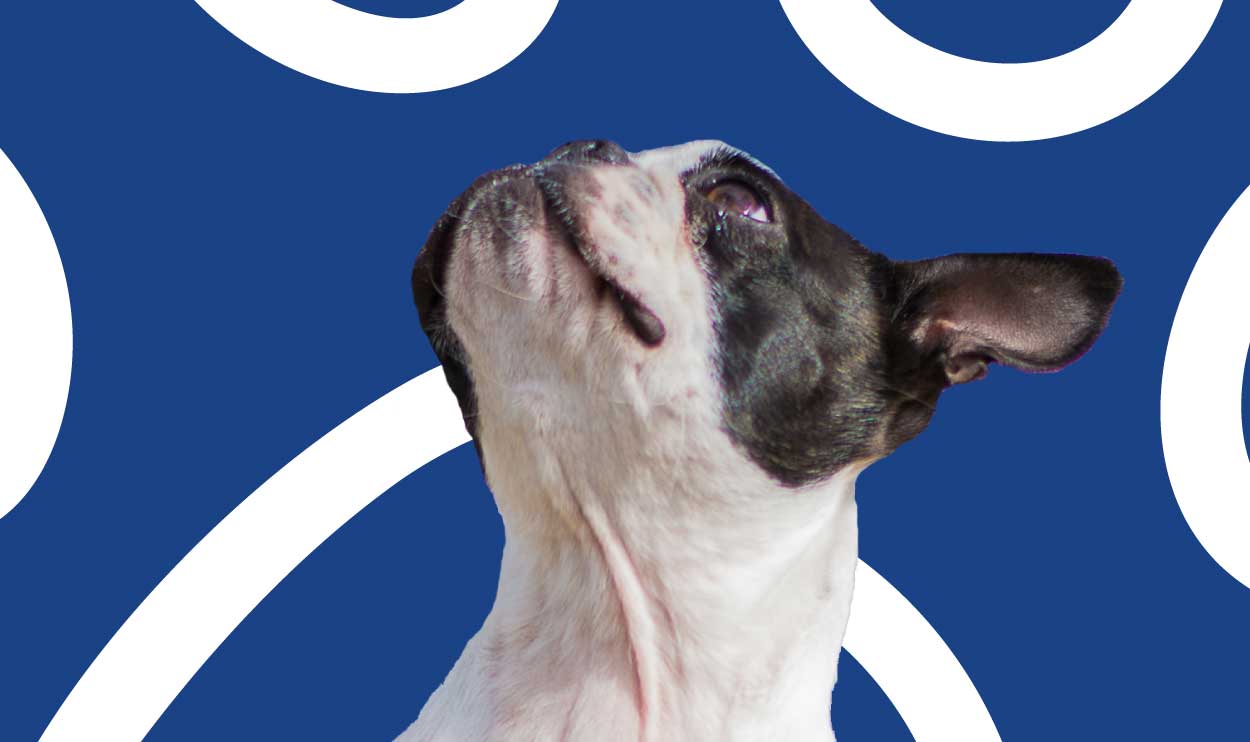Crate training: essentials
dos and don'ts
Crate training: essentials
dos and don'ts


But it’s really important to crate train your dog in the right way, so that they’re happy to wait in their crate while you’re away for a few hours.
The importance of crate training
Your puppy may (and should!) be the center of your world. But sometimes you might need to make sure they’re secure while you’re out of the house. That’s where crate training comes in handy, getting them used to a safe space that’s familiar and comfortable.
Just like the best pet insurance plans, having a comfortable crate for your pet will keep them protected. And make sure they can’t do any damage to themselves, or your home.
Do: Make the crate appealing
Crate training might seem like it’s all about you, but it can be really helpful for your pet as well. Like a lot of animals, dogs prefer comfy, ‘cave-like’ environments where they can curl up and rest without any distractions.
A crate is the perfect place for this, and you can make it even more appealing by fitting it out with a few home comforts. A bed inside and a blanket on top are great places to start, and a few toys or treats inside won’t go amiss either. You may even find your dog prefers hanging out inside the crate after a while.
Just don’t be offended if they decide it’s a better option than curling up next to you on the couch!
Don’t: Overuse the crate
When your puppy’s young, it’s really important not to leave them in their crate for too long. Crating a dog while at work can be tempting, but young puppies won’t be able to hold their bladders for a full day. And that means you’ll have a mess to clean up when you get home.
A rough guide is to add a one to their age (in months) and use that as the most time your dog should spend in a crate .
For example, a four-month-old pup shouldn’t spend more than five hours in their crate. This might mean you need to get up once or twice during the night when you first start crate training. But as time goes on, your dog will be able to spend longer and longer periods snuggled up inside without getting distressed.
Do: Prepare your pup for their crate
Before you start crate training, it’s a good idea to let your dog get used to the crate on their own terms. You might want to simply leave it in the corner of the room with the door open and a few treats inside.
This will let your pet come and go as they please, and will create a positive association between entering the crate and being fed.
If you want to take your crate training to the next level, you can also start using the word ‘in’ or ‘out’ whenever your dog enters or leaves the crate. This will start to build up an association between those words and the crate, which makes things a lot easier in the long run if you ever need to put your pet into their crate quickly and leave home in a hurry.
Don’t: Use a crate that’s the wrong size
If it’s your first time crate training a dog, you might think that a bigger size will work better, and give them more space. In practice though, this doesn’t work as well as a slightly smaller dog crate, because your puppy might decide that one area of the crate is their bathroom!
And it goes without saying that you never want a crate that’s too small, because it will stop your dog from being able to stand up and stretch.
Of course, dogs can grow quickly, and it can be expensive having to change to a bigger size every few months. If you’re worried about cost, you can always get a slightly oversized crate while your puppy is young and block off part of it with a crate divider. Or, you can rent a crate, rather than buying one. Alternatively, you might want to splurge on an expandable crate that can grow alongside your dog.
Do: Remember exercise
Your dog is a lot more likely to enjoy time in their crate if they’re not still full of unused energy from the day. If they haven’t been walked or played with, they might become a bit overexcited and struggle to calm down and curl up – especially when it’s time for bed.
To make sure they’re ready to settle in for the night, it’s important to allow for the right amount of activity during the day. This might just mean a short walk for older pets, but a young puppy will have a lot more energy, which you’ll need to keep in mind before you get them ready for bed.
Don’t: Use your crate as punishment
Last, but certainly not least, you should never, ever use your crate as punishment, no matter how mischievous your dog’s been. The crate is a safe space for them to relax in, and if they start to associate it with being in trouble, they’ll be a lot less likely to want to spend time inside it.
Always make sure that your dog associates their crate with positive things, whether that means giving them treats when they go in, or plenty of love and attention when they spend time inside.
Settled on a pet insurance program?
Just like crate training, finding the best pet insurance for your new puppy is one of the most important steps in settling them in and making sure they’re well taken care of.
At TrustedPals, we make it quick and easy to sign up for comprehensive coverage, with a single plan that has a premium which can be tweaked to suit your budget.
It only takes a few minutes to get a quote , so what are you waiting for!
Share this
You might be interested in
The importance of crate training
Your puppy may (and should!) be the center of your world. But sometimes you might need to make sure they’re secure while you’re out of the house. That’s where crate training comes in handy, getting them used to a safe space that’s familiar and comfortable.
Just like the best pet insurance plans, having a comfortable crate for your pet will keep them protected. And make sure they can’t do any damage to themselves, or your home.
But it’s really important to crate train your dog in the right way, so that they’re happy to wait in their crate while you’re away for a few hours.
Do: Make the crate appealing
Crate training might seem like it’s all about you, but it can be really helpful for your pet as well. Like a lot of animals, dogs prefer comfy, ‘cave-like’ environments where they can curl up and rest without any distractions.
A crate is the perfect place for this, and you can make it even more appealing by fitting it out with a few home comforts. A bed inside and a blanket on top are great places to start, and a few toys or treats inside won’t go amiss either. You may even find your dog prefers hanging out inside the crate after a while.
Just don’t be offended if they decide it’s a better option than curling up next to you on the couch!
Don’t: Overuse the crate
When your puppy’s young, it’s really important not to leave them in their crate for too long. Crating a dog while at work can be tempting, but young puppies won’t be able to hold their bladders for a full day. And that means you’ll have a mess to clean up when you get home.
A rough guide is to add a one to their age (in months) and use that as the most time your dog should spend in a crate .
For example, a four-month-old pup shouldn’t spend more than five hours in their crate. This might mean you need to get up once or twice during the night when you first start crate training. But as time goes on, your dog will be able to spend longer and longer periods snuggled up inside without getting distressed.
Do: Prepare your pup for their crate
Before you start crate training, it’s a good idea to let your dog get used to the crate on their own terms. You might want to simply leave it in the corner of the room with the door open and a few treats inside.
This will let your pet come and go as they please, and will create a positive association between entering the crate and being fed.
If you want to take your crate training to the next level, you can also start using the word ‘in’ or ‘out’ whenever your dog enters or leaves the crate. This will start to build up an association between those words and the crate, which makes things a lot easier in the long run if you ever need to put your pet into their crate quickly and leave home in a hurry.
Don’t: Use a crate that’s the wrong size
If it’s your first time crate training a dog, you might think that a bigger size will work better, and give them more space. In practice though, this doesn’t work as well as a slightly smaller dog crate, because your puppy might decide that one area of the crate is their bathroom!
And it goes without saying that you never want a crate that’s too small, because it will stop your dog from being able to stand up and stretch.
Of course, dogs can grow quickly, and it can be expensive having to change to a bigger size every few months. If you’re worried about cost, you can always get a slightly oversized crate while your puppy is young and block off part of it with a crate divider. Or, you can rent a crate, rather than buying one. Alternatively, you might want to splurge on an expandable crate that can grow alongside your dog.
Do: Remember exercise
Your dog is a lot more likely to enjoy time in their crate if they’re not still full of unused energy from the day. If they haven’t been walked or played with, they might become a bit overexcited and struggle to calm down and curl up – especially when it’s time for bed.
To make sure they’re ready to settle in for the night, it’s important to allow for the right amount of activity during the day. This might just mean a short walk for older pets, but a young puppy will have a lot more energy, which you’ll need to keep in mind before you get them ready for bed.
Don’t: Use your crate as punishment
Last, but certainly not least, you should never, ever use your crate as punishment, no matter how mischievous your dog’s been. The crate is a safe space for them to relax in, and if they start to associate it with being in trouble, they’ll be a lot less likely to want to spend time inside it.
Always make sure that your dog associates their crate with positive things, whether that means giving them treats when they go in, or plenty of love and attention when they spend time inside.
Settled on a pet insurance program?
Just like crate training, finding the best pet insurance for your new puppy is one of the most important steps in settling them in and making sure they’re well taken care of.
At TrustedPals, we make it quick and easy to sign up for comprehensive coverage, with a single plan that has a premium which can be tweaked to suit your budget.
It only takes a few minutes to get a quote , so what are you waiting for!






